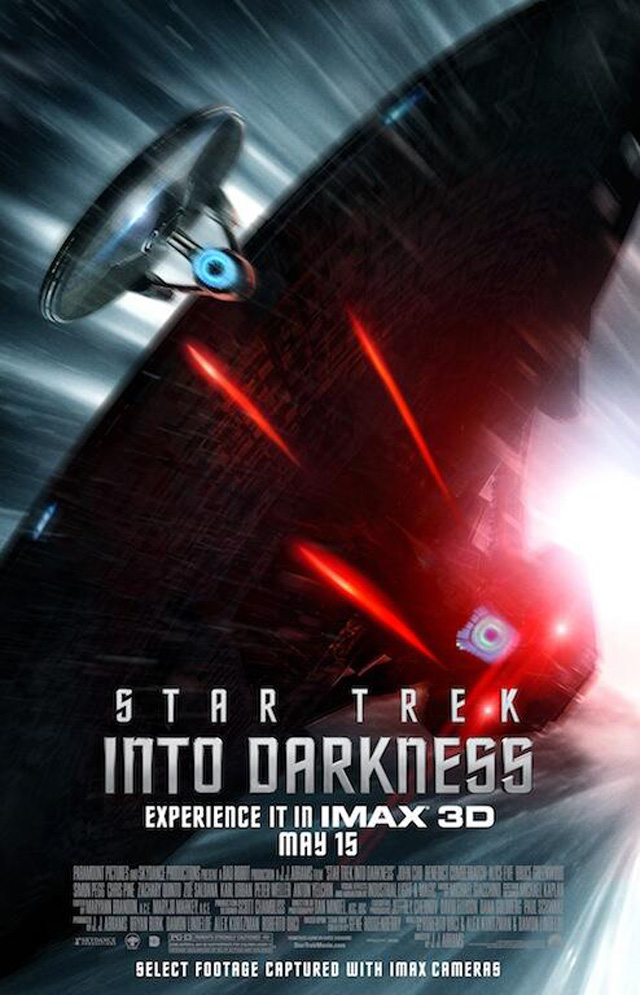NASA Beams Up 'Star Trek Into Darkness' to Astronauts In Space

The three astronauts on board the International Space Station are getting a sneak peak of the latest "Star Trek" film just before people around the world get a chance to see it in theaters themselves.
"Star Trek Into Darkness" — the newest movie in the long-lasting science fiction franchise — is set for release in the United States on Thursday (May 16), but NASA is beaming up the movie to the space station before its official release date, officials with the space agency confirmed.
This movie screening is particularly significant for one of the members of the crew. NASA astronaut Chris Cassidy is set to participate in a Google+ Hangout with director J.J. Abrams and some of the cast members from the new movie on Thursday at 12 p.m. EDT (1600 GMT). [See Photos from "Star Trek Into Darkness"]
"Cassidy will provide insights about life aboard the station," NASA officials wrote in a statement. "Crews conduct a variety of science experiments and perform station maintenance during their six-month stay on the outpost. Their life in weightlessness requires different approaches to everyday activities such as eating, sleeping and exercising."
Cast members taking part in the event include Chris Pine (Captain Kirk), Alice Eve (Dr. Carol Marcus) and John Cho (Sulu).
You can watch the Google+ Hangout live on SPACE.com and you can take part in the event by submitting questions on YouTube, Google, Twitter and Facebook using the #askNASA hashtag.
"The deadline to submit video questions is 3 a.m. Wednesday, May 15," NASA officials wrote. "To be considered, video clips must be no longer than 30 seconds and uploaded to YouTube and tagged with #askNASA. Submitters should introduce themselves and mention their location before asking their question."
Breaking space news, the latest updates on rocket launches, skywatching events and more!
The first "Star Trek" film in the most recent iteration of the series was sent up to the orbiting laboratory when it was released in 2009. In 2005, "Harry Potter and the Goblet of Fire" was sent up to entertain the space station crewmembers.
Astronauts have long been inspired by "Star Trek." The crew that launched aboard the final flight of the space shuttle Endeavour recreated the poster from the 2009 "Star Trek" re-boot for their mission poster.
It's a busy week for the residents of the International Space Station, but they should get a little time to sit back and enjoy the movie before Cassidy's webcast on Thursday. Three crewmembers just returned to Earth after a five month stay, leaving Cassidy and Russian cosmonauts Pavel Vinogradov and Alexander Misurkin to man the station until three new astronauts fly up a the end of the month.
The $100 billion space station was built by five different space agencies that represent a total of 15 countries. Construction began in 1998 and the station has been occupied by crews of cosmonauts and astronauts continuously since 2000.
Follow Miriam Kramer on Twitter and Google+. Follow us on Twitter, Facebook and Google+. Original article on SPACE.com.

Miriam Kramer joined Space.com as a Staff Writer in December 2012. Since then, she has floated in weightlessness on a zero-gravity flight, felt the pull of 4-Gs in a trainer aircraft and watched rockets soar into space from Florida and Virginia. She also served as Space.com's lead space entertainment reporter, and enjoys all aspects of space news, astronomy and commercial spaceflight. Miriam has also presented space stories during live interviews with Fox News and other TV and radio outlets. She originally hails from Knoxville, Tennessee where she and her family would take trips to dark spots on the outskirts of town to watch meteor showers every year. She loves to travel and one day hopes to see the northern lights in person. Miriam is currently a space reporter with Axios, writing the Axios Space newsletter. You can follow Miriam on Twitter.
